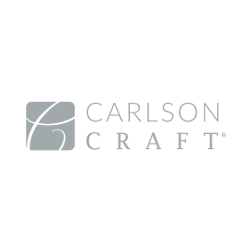When it comes to education, choice is important


The issue of school choice has come up in the news again, in a couple of instances, with passionate people on both sides.
For one, attorneys representing several Wisconsin residents filed a lawsuit last Thursday challenging Wisconsin’s school choice program, arguing that it has created a “funding death spiral” for public schools in the state and that it goes against the state Constitution. The complainants went directly to the Wisconsin Supreme Court, hoping to bypass the lower courts. The lawsuit is being funded by the Minocqua Brewing Company SuperPAC. Plaintiff s include a former dean of the UW-Madison School of Education, a former member of the Oregon School Board and a special education liaison for families with children with special needs in the Milwaukee public schools system. As of this writing, the state Supreme Court had not decided if it would take up the case or not. Also, last month, Wisconsin state legislators began circulating six “Public Money for Public Schools” bills that, if passed, would collectively put an end to Wisconsin’s school voucher programs. LRB-4295 specifically would prevent any new private schools from entering the state’s school choice program and would also prevent any new students from entering, eventually phasing out the program.
“What started out as a small experimental program in Milwaukee in the 1990s has been transformed by our Legislature into a large and growing cancer on Wisconsin’s public schools,” states the lawsuit I referenced earlier.
Before diving into my opinion on all this, some context may be helpful.When it started, I don’t know that anyone could have foreseen how large Wisconsin’s school choice program would become. The Milwaukee voucher program started in 1990-91 with 337 students and now has more than 29,000. The Wisconsin Parental Choice Program (WPCP) started in 2013 with a cap of 500 students, and has since grown to more than 17,000 participating students. Data released last Friday shows that nearly 55,000 students are enrolled in one of four state parental choice programs: the Wisconsin, Racine and Milwaukee programs, and the Special Needs Scholarship Program. That is an increase of 2,760 from last year.
Two things can be true at once. The funding formula for the state’s school choice program needs reworking, and also the school choice program is a valuable option for students and parents that shouldn’t be discontinued. We’re in too deep to simply pull the plug. It isn’t fair to the thousands of students who have come to rely on and thrive in voucher schools.
To the best of my understanding, which certainly could be flawed, school voucher funding works like this. Under the voucher funding system, a public school has its state aid reduced by the amount of the voucher for each voucher student. For the 2023-24 school year, that is $9,893 for grades K-8 or $12,387 for grades 9-12 under the WPCP. So the district loses that much in state aid per student, but is then allowed to tax property owners that much more to still reach the revenue limit. It’s a flawed system, as public schools’ state funding should not be dependent on the number of voucher students in their district. Public school funding should only factor public school enrollment, not voucher school enrollment.
The Wisconsin Institute for Law and Liberty (WILL) wrote a brief in June 2023 that proposed “decoupling” a school district’s school voucher students from a district’s enrollment count so that students who receive a voucher are fully funded by the state via general purpose revenue. The Milwaukee Parental Choice Program is already in the process of doing this and I hope there will be more. This could be one possible solution.
So, the state’s school funding method is messed up, in more ways than one. Many public schools, especially those with declining enrollment, are struggling to make it financially and don’t need any extra financial burdens. There is definitely reform needed. But the need for reform shouldn’t be an excuse for entirely dismantling the school choice system. To discuss a few of the positives of school choice – first, in general, having more options is a good thing. Students in private schools have been shown to outperform their public school peers, including higher test scores, lower involvement in criminal activity and higher levels of civic engagement. Competition in the marketplace encourages schools to be better.
Further, kids are not a one-size-fits-all. Some kids thrive with more independence and being able to work on tasks at their own pace, while others need more structure. This is not a knock on the public school system by any means; there are a lot of great teachers out there doing great things to help kids learn. I was educated in the public school system and feel that overall, my school did a good job of providing a well-rounded education. But, not every kid learns best in a traditional school setting.
Also, schools under the parental choice program still have criteria they have to meet. Parents are allowed to opt-out their students from religious instruction, if it’s a religious school. So it’s not as if the state is paying for mandatory religious instruction. Voucher schools are required to administer state testing to scholarship recipients in third, fourth, eighth, ninth, 10th and 11th grade. They must annually submit an audit to the state conducted by a certified public accountant. They also must provide the DPI with information about the academic program at the participating school and student test score data. There are more requirements which I don’t have space to list here, but my point is, it’s not a free-for-all scenario for private schools. There are still checks and balances.
Also, even as schools have had increased testing and reporting requirements over recent years, it hasn’t helped students to perform better. Schools are collecting more data than ever before, and teachers have more and more standards they are expected to meet. Yet, students are struggling just as much if not more. Higher government regulation does not equal better educational outcomes and, in fact, may lead to the exact opposite. Food for thought. Here’s hoping legislators and policymakers can work together to find funding solutions and set policies that offer the most educational benefit to all Wisconsin students.
Striking a
Chord...




